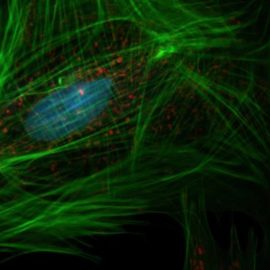

This article is an excerpt from the Shortform book guide to "NeuroTribes" by Steve Silberman. Shortform has the world's best summaries and analyses of books you should be reading.
Like this article? Sign up for a free trial here.
What were the differences between Kanner and Asperger’s autism research? Whose research came out on top?
In the post World War I era, there were two famous doctors studying autism: Leo Kanner in the US and Hans Asperger in Austria. In his book NeuroTribes, Steve Silberman compares the two men’s approaches and points out the differences.
Here’s a look at the differences in the autism research.
Two Different Approaches
According to Silberman, Kanner approached autism research differently than Asperger did, which led to discrepancies in their findings and—Silberman suggests—inaccuracies in Kanner’s. Silberman describes four main differences between Kanner and Asperger’s research: the age of the subjects, the range of their traits, the rarity and severity of their traits, and the belief in what causes autism.
Difference #1: Age of Subjects
While Asperger studied both children and adults, Kanner limited his study to very young children. Because of this, diagnostic criteria were limited to early childhood behaviors, meaning that teens and adults who weren’t diagnosed in childhood often went undiagnosed for the rest of their lives.
(Shortform note: Though we now know that autism is a lifelong condition, many adults still face difficulty in getting diagnosed. This is partly because the diagnostic criteria are based largely on observable traits in someone’s early childhood, which can be difficult to recount later in life. Additionally, people who make it to adulthood without a diagnosis tend to develop strategies for masking or compensating for their autistic traits. Though it can be difficult to get a diagnosis, it can help autistic people understand their experiences and access support.)
Difference #2: Range of Traits
According to Silberman, Kanner also ignored the individual differences between his patients and described autism according to very restrictive criteria. He viewed autism as a monolithic disorder with few or no variations—as opposed to the spectrum Asperger identified.
(Shortform note: The idea that autism always looks the same (and specifically, that it’s always characterized by severe deficits) persists to this day. Autistic people who don’t appear to have such deficits might be told, “You don’t look autistic”—a statement that, while it may be intended as a compliment, is considered an ableist microaggression by many autistic people.)
Difference #3: Rarity and Severity
Additionally, Kanner defined autism as being extremely rare and very severe, explains Silberman. This clashed with Asperger’s understanding of autism as relatively common and presenting on a spectrum. While Asperger intentionally worked with children of all different levels, Kanner placed himself at the top of the autism assessment and treatment hierarchy, guaranteeing that he would only see the most severe cases.
(Shortform note: As mentioned in earlier commentary, current estimates suggest that around 1% of the global population is autistic. For context, this number is comparable to the number of redheads in the world. Additionally, the severity of autism doesn’t just vary from person to person: An individual autistic person’s symptoms and traits can change significantly over the course of their life. They can become more or less severe over time, or they can be replaced by completely different symptoms.)
Difference #4: Cause
Finally, Silberman explains that Asperger and Kanner differed in their beliefs on what caused autism: While Asperger felt confident that it was a genetic disorder passed on through families, Kanner instead promoted the idea that it was a condition caused by insufficiently affectionate parenting in a child’s early years.
(Shortform note: Some researchers dispute the claim that Kanner blamed parents for autism or that he rejected the idea of a genetic cause. Instead, they argue that in describing the parents (especially mothers) of autistic children as cold and detached, he was suggesting that the parents’ brains worked similarly to their children’s brains. This would support the idea that autism is genetic and passed down from parent to child.)
Because Kanner’s work was so well-known while Asperger’s was virtually unheard of, the medical field came to view autism as a severely disabling, extremely rare disorder inflicted by bad parenting—a misunderstanding that lasted for decades to come.

———End of Preview———
Like what you just read? Read the rest of the world's best book summary and analysis of Steve Silberman's "NeuroTribes" at Shortform.
Here's what you'll find in our full NeuroTribes summary:
- The truth behind the common misconceptions about autism
- How society’s perception of autism has evolved since the 1930s
- The most effective treatments for autism spectrum disorder






